Race to Alaska: An Insider Interview
We catch up with R2AK founder, Jake Beattie, and RaceBoss, Jesse Wiegel. (*Their legal counsel might have been present and advising in hushed tones throughout the interview.)
We were there at the beginning, helping to launch the now legendary 750-mile engineless slog from Port Townsend to Ketchikan, but it’s been a lot of years since this “bad idea”—the so-called “Iditarod with a chance of drowning”—became a reality. We thought it’d be interesting to talk to R2AK founder, Jake Beattie, and RaceBoss, Jesse Wiegel, to see what’s new, what’s still the same, and whether the race-winning formula has finally been solved. —Josh Colvin
So how many R2AKs have there been now?
Jake: I think we are at 8 now? I always have to do the math.
Jesse: It’s 8, been 8 all year. Still 8.
How is this year shaping up?
Jesse: We’ve got 37 teams trying to go all the way—and a really interesting fleet to boot: Fast racing boats, kayaks, a solo pedal pod human-powered thing, a custom 4-person pedaled catamaran, and five Santa Cruz 27s.
Jake: No one cares about SC-27s.
Jesse: I do. Some people might.
Jake: Sure. Beyond the boats we’ve got some great stories—more young people, and more women than I think we’ve ever had before. It’s shaping up to be a really cool year.
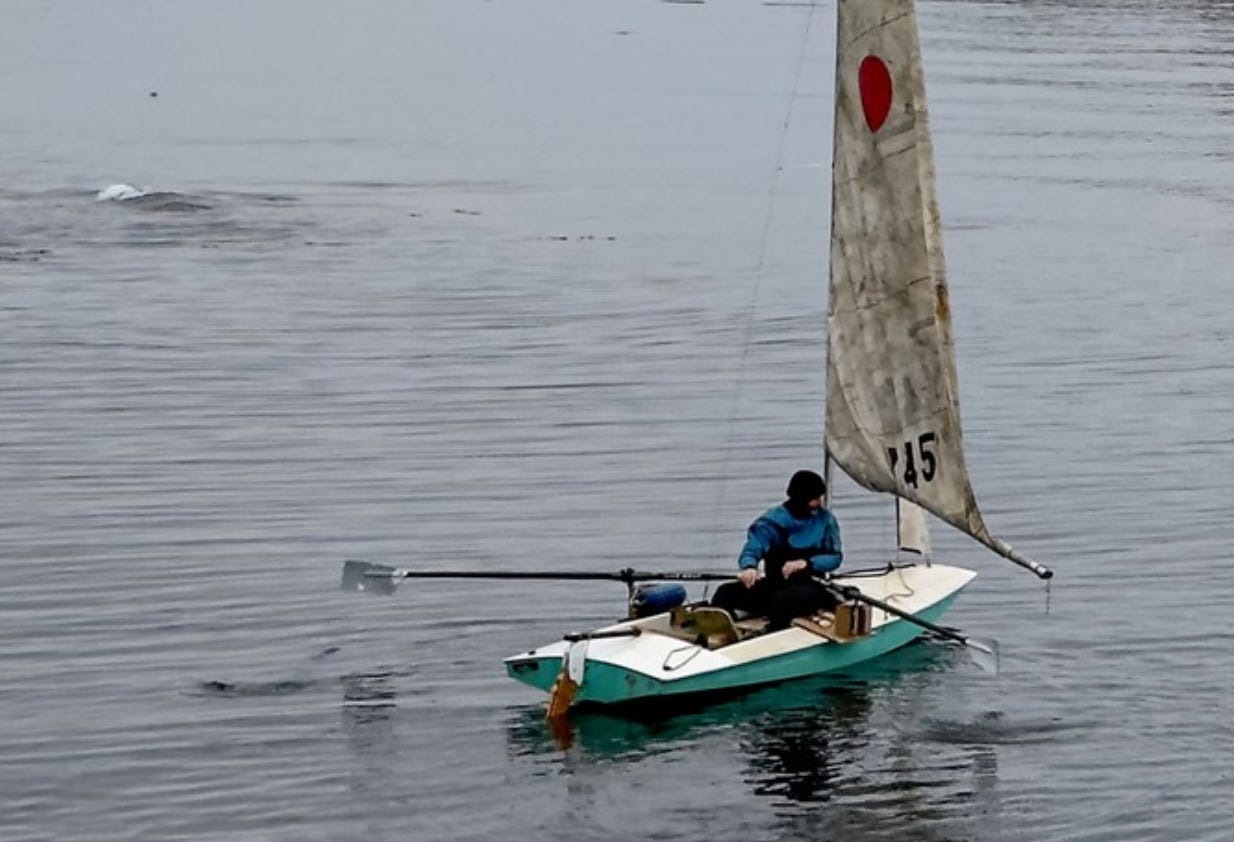
We were pleased to see this year’s field is intriguingly diverse—monohulls, multihulls, small boats and kayaks—even that pedal boat and a classic catboat. Any team you’d call a favorite to win? How about a team you’re most interested to watch?
Jake: Can I Jump in?
Jesse: Be my guest.
Jake: I’m really rooting for Team Malolo. Can I say I’m rooting?
Jesse: Not really, but sure.
Jake: Well then I’m rooting for them. They’re great racers, on a fast trimaran that has been plagued by horrendous log strikes in their last two tries. In 2022 it cost them first place, and in 2023 it cost them the race as they had to retire in Comox after bashing in one of their amas. I don’t think anyone deserves anything, really, but these guys get about as close to that as I get.
Isn’t it wonderful and sort of remarkable in today’s litigious, bubble-wrapped, safety-helmet society, that an engineless 750-mile race through the remote wilds of the Inside Passage could even exist?
Jake: (places hand on mic, confers with Jesse) Our lawyer has advised us not to comment on this question.
Jesse: (*nods*) Let’s move on.
We all remember the great unknowns of the first R2AK—the terror and the excitement. Obviously after this many years racers have a better understanding of what to expect. I remember that first year we had other experts assuring us it was “a rowing race” and that sailors wouldn’t find enough wind. To what extent do you feel like the race is “solved”—at least in terms of boat choice and strategy for those teams really trying to win?
Jake: I’m curious what Jesse would say about this, but the biggest one for me: A sailboat will always win. In the first race we really hyped-up that we had no idea, and that calms might let a human-powered boat win, but the math just doesn’t work like that. Fast boats, without handicaps or time corrections, are going to win, and an atmosphere worth of energy is going to beat somebody’s biceps every time.
Jesse: That, and I love how much pedal-power has evolved over the years. It’s leaps and bounds from where it was.
Jake: Right, and, as a wise man once said: the best thing about the R2AK is that the winner is the least interesting thing about the race. “Solving” the race can’t really be done because it’s such a personal journey. You can’t solve the race in the same way you can’t solve marriage, humans are involved.
Jesse: What?
If R2AK was a one-design race, which boat would you put racers aboard?
Jesse: Squareriggers. I’m an old tallship guy, and I just think it would be such a cool sight to see a fleet of tallships short tacking up Johnstone Strait. It would look so good. We had a 120-foot viking ship want to do it a couple years back, which would have been amazing.
Jake: Jesse’s fancy. Mine would be more on the dirtbag side. Maybe a San Juan 21. Cheap, has a cabin, beachable, the ultimate Craigslist cruiser. That or do it in a canoe to get a little closer to the experience of the people who first made this trip.

Any teams stand out from memory as “least likely to succeed” but still managed to finish?
Jake: That’s kind of a mean question.
Jesse: He’s met you before.
Jake: Ha! Fair. I mean there have been so many—from the guy who finished on the SUP, people who came in 4th on a Nacra 20… actually those are both incredible, but not in the least likely to succeed category.
Maybe a reframe: One of the most incredible stories about overcoming obstacles and expectations of any of these races was Team Alula from 2016. It’s a long story, but any time a team of quadriplegics can finish the R2AK it’s pretty damned cool.

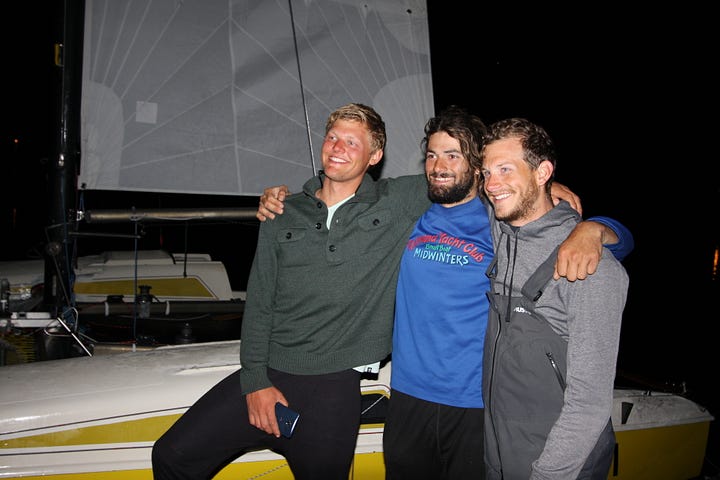
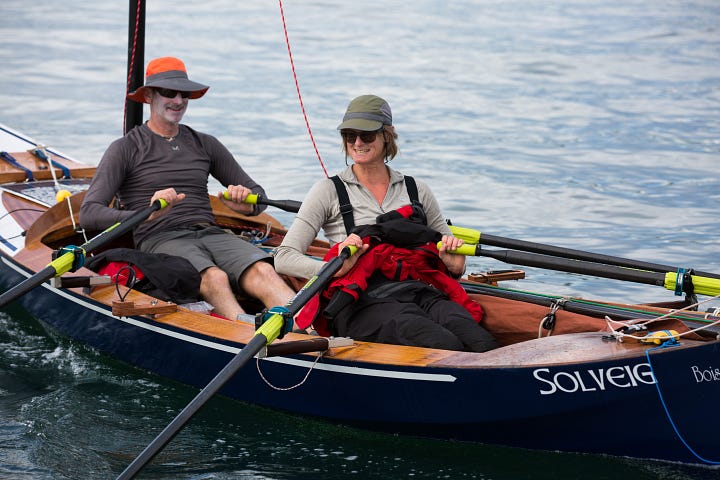
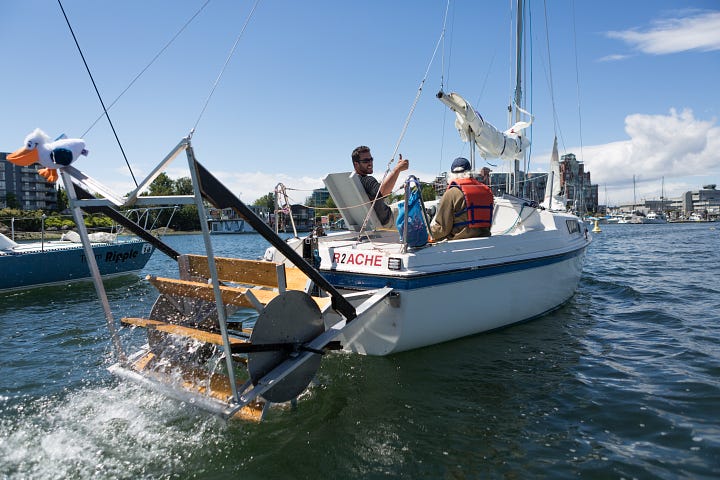
I know the rules allow for portaging your vessel, so long as it’s done under human power. Has anyone ever exploited this provision successfully?
Jake: Define success.
Jesse: We had one famous one in the Washington 360. Lillian from Team Lillian decided to row down Hood Canal and portage over to the other side. Only boat race we know of with a two-mile stretch on the highway.
Have you had any racers push the boundaries and force you to make a new rule, and perhaps name it after them?
Jesse: I don’t think so…
Jake: Not one that we can publish!
I know you’ve at least considered rule and course changes, and I assume you’ve had plenty of suggestions. What are some of the best and worst ideas for R2AK tweaks?
Jake: There have been a lot of suggestions over the years, hard to remember them all—and we’ve done some ourselves. The biggest thing I’ve learned from reacting to them all is that the key is to keep R2AK simple. It’s surprisingly easy to make things more complicated—which is sometimes attractive in the short term—but keeping things simple is hard and totally worth it.
At Small Craft Advisor we talk a lot about seamanship. Looking back over R2AK history do you see any common themes among the boats and crews who’ve gotten into trouble? Or maybe the ones who’ve best avoided catastrophe? Any lessons for the common boater?
Jake: Hubris. It’s the Achilles heel that runs through the whole thing. From Olympians to amateurs, at some point everyone confuses luck with skill and they get sideways of a log or a knockdown gust of wind. What’s that phrase? The sea finds out what you did wrong.
From Olympians to amateurs, at some point everyone confuses luck with skill…
Jesse: Maybe another way to say it—my RaceBoss advice—would be this: Whether you’re in the Race to Alaska or just out on your boat, race your race. Everyone shows up with their own skills and limitations—both for themselves and their boat. As long as they stay inside of those parameters things go pretty well. We talk a lot about the perils of the course—rapids, bears—but the biggest peril on the course is losing track of who you are. The biggest risk of all of this is what’s inside of you.
Jake: That was surprisingly wise.
Jesse: Thank you?
Of concerns like bad weather, equipment failure, sleep deprivation, floating logs, marine traffic, and hungry bears, etc.—are there any dangers you think racers regularly underappreciate?
Jesse: Logs. Especially for people trying to win and going all night, or solo folks, and especially trimarans—logs do-in a surprising number of folks before they even get to Seymour Narrows.
Jake: Totally agree, driftwood is the number one unsung “Bond villain” of the R2AK. For sure.
As race organizers, but also fans, do you find yourselves hoping for good weather or secretly wishing for stormy conditions?
Jesse: I run the risk management side of this thing—good weather.
Jake: I think it’s great to have both. Ideally it’s stormy early in the course so things will break when people have good bailout options, and then somewhat less dangerous for the more remote parts of the course. I also love the years when calm weather meets the teams that under-valued human propulsion. Nothing like living with your choices while you try to make an Olsen 30 go for days with nothing but SUP paddles. Also nice sunsets for great photos.
Jesse: He’s the hype guy.
… the biggest peril on the course is losing track of who you are. The biggest risk of all of this is what’s inside of you.
What else is on your fertile minds? Any new projects or races in the works?
Jesse: We’re resurrecting the race we ran during Covid when we couldn’t cross the border. We call it the Washington360, a 360-mile lap around the inland waters of Washington. The 360 starts in Port Townsend, goes south to Olympia, and then all the way to Point Roberts near the Canadian border, then back to Port Townsend via Port Angeles. It’s a great race that really brings connection to a bunch of communities.
Jake: It’s going to be great—and a little lower barrier of entry than the R2AK. The races are both projects of Northwest Maritime, a non-profit that does a ton of stuff to get people connected to the water. We’re always doing something new. Right now we’re working with a number of schools to get more maritime learning infused into regular school experiences. R2AK racers of the future!
What’s the best way for R2AK fans to follow the race this year?
Jesse: Always R2AK.com, but also this year we are using Yellow Brick for our tracker. It has it’s own app that you can download for even better experiences. Check YB Races on whatever app store you like.
Editors note: After this year’s event the R2AK will move to and every-two-years schedule with the WA360 running on alternate years. •SCA•




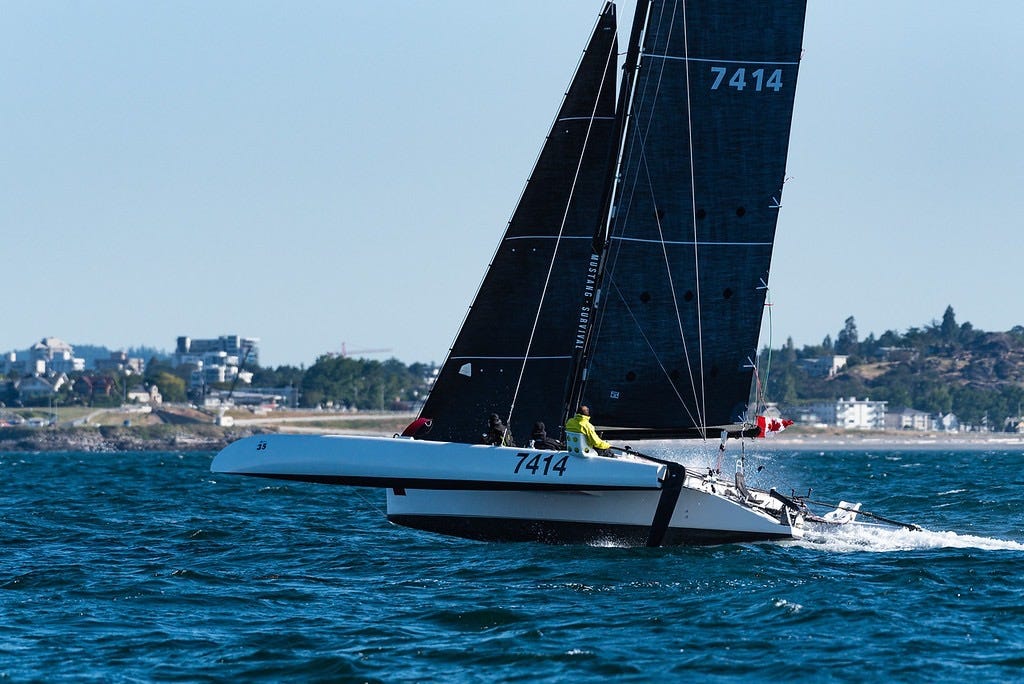
We'll be joining the ruckus tomorrow afternoon but that's as far as we go!
Someone Please tell me there is a video of this conversation?! Jesse and Jake are hillarious. I've love to see the face expressions and hear the voice inflections. Great interview and may the R2AK continue... to educate us all.